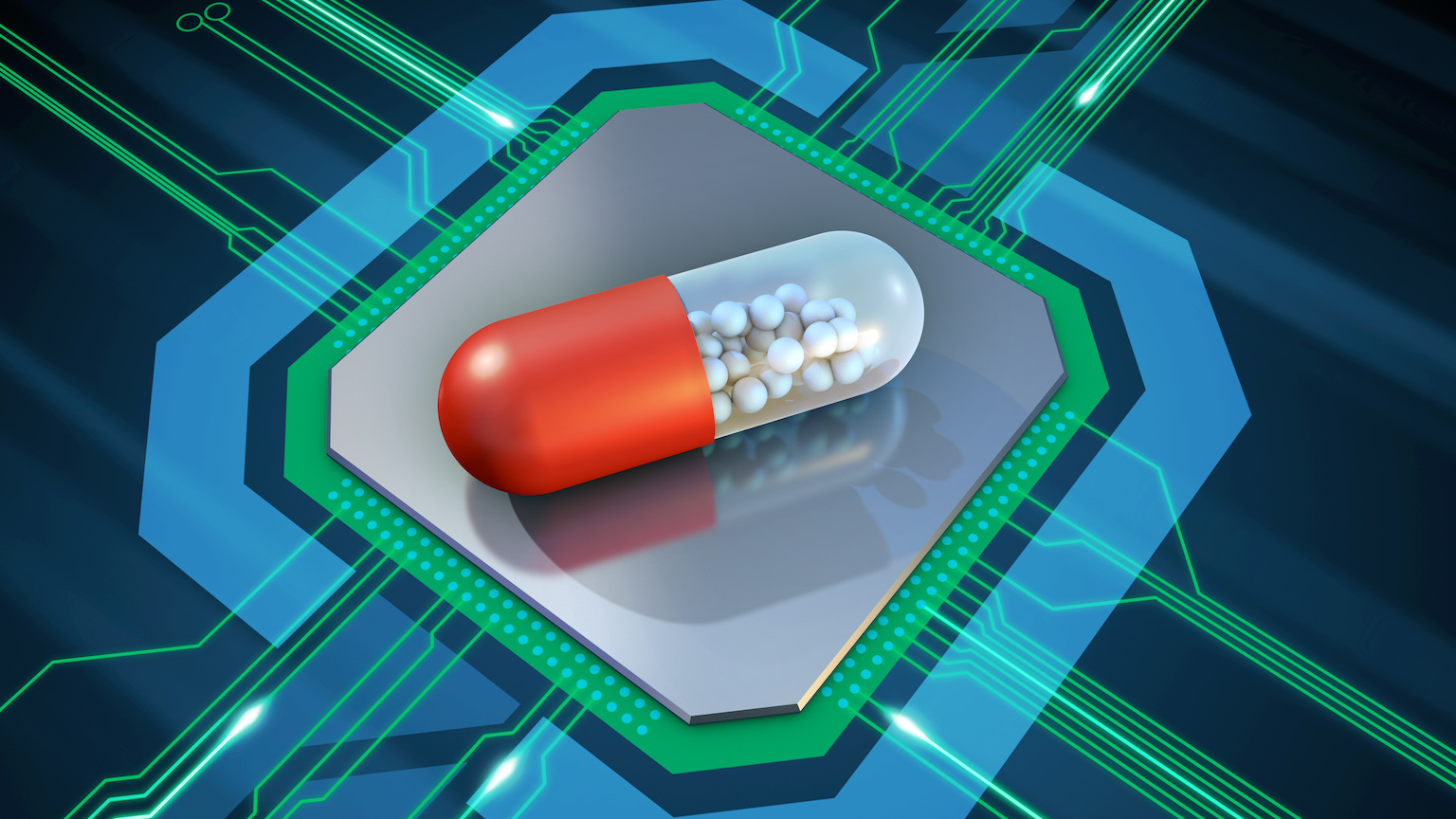Edible electronics: When will we be eating technology?

- Edible electronics could revolutionize medicine, precisely delivering drugs and monitoring gut health.
- Unfortunately, owing to technical challenges, progress has been slow.
- There is a long way to go before edible electronics realize their potential, but lots of research is underway, and the thinkers involved are excited.
Americans endlessly chatter about what to eat. Low fat, high protein, vegan, ketogenic — but what about electronic? Since the turn of the 21st century, a dedicated group of scientists, engineers, and technologists has been trying to create edible electronics, not necessarily for human nutrition, but rather for medical purposes.
Electronic devices composed of digestible materials that gradually break down in the body over a matter of days could precisely deliver medication inside the body and measure drug uptake. They could monitor symptoms of gastrointestinal disorders and the gut microbiome. They could allow doctors to remotely observe patients’ internal health without a visit to the hospital, further enhancing the telehealth revolution and allowing more people access to healthcare.
But though edible electronics appeal to our technological appetites (even if not necessarily to our taste buds), they have not advanced as quickly as some would like.
“Owing to the numerous challenges, the progress in this appealing field appears to be relatively slow,” a team of researchers wrote in a report published in fall 2020 in the journal Advanced Materials Technologies.
Chief among those challenges are the materials that scientists have to work with. Various elements found in conventional electronics — think manganese, magnesium, silicon, and copper — can actually be consumed in very small amounts, but those safety limits don’t provide enough wiggle room for scientists to craft edible electronics with those materials. This means that researchers need to get inventive.
Right now, they are looking at biodegradable polymers like silk fibroin, pea protein and apple extract, and caramelized sugar as substrates to contain electronic materials. Gold and silver, which are inert and already permitted as food additives, can be utilized as conductors. Conductors are essential components in electronic devices that appear in interconnections and electrodes, among other places. Gatorade and Australia’s favorite food spread, Vegemite, could also be used here, because they are full of charged electrolytes.
Finding materials to make edible semiconductors is a tad more taxing. “Semiconductors are key to electronic functionalities, as they determine the operation of active devices, such as charge transport, light emission, and photon to charge conversion,” the researchers explained.
DNA, as well as certain proteins, pigments, and dyes are being explored for use as semiconductors. Silicon is also being considered, but it would have to be integrated in minuscule amounts.
Outside of the edible electronics themselves, we will need to find ways to power them. Believe it or not, microscopic lithium batteries could be an option, but researchers will need to find non-toxic chemicals to use for their electrodes.
Along with colleagues in his lab, Christopher J. Bettinger, a professor of biomedical engineering at Carnegie Mellon University, previously built a potentially suitable prototype battery for edible electronics. It featured “a cathode made of melanin — the pigment that colors hair and skin — and an anode made of manganese oxide, a form of a mineral that plays a role in nerve function,” Neil Savage described for IEEE Spectrum.
Eschewing batteries, creating edible electronics that harvest chemical energy from food in the stomach or kinetic energy produced by the very movements of the gastrointestinal system might be more promising, researchers say. Engineers have made prototype nano-generators with these capabilities, but they either do not produce enough power or cannot function inside the body.
A final hurdle is communication. Edible electronics will need to sync with external devices to relay information. Inedible swallowed sensors and implants are already capable of this using radio frequency (RF) systems, but fully edible RF systems do not exist yet.
There is a long way to go before edible electronics realize their potential, but much research is underway, and the thinkers involved are excited, as they expressed in the 2020 review article. “This field has the potential to disruptively impact fundamental areas of life and to enhance individual and social health and wealth.”





